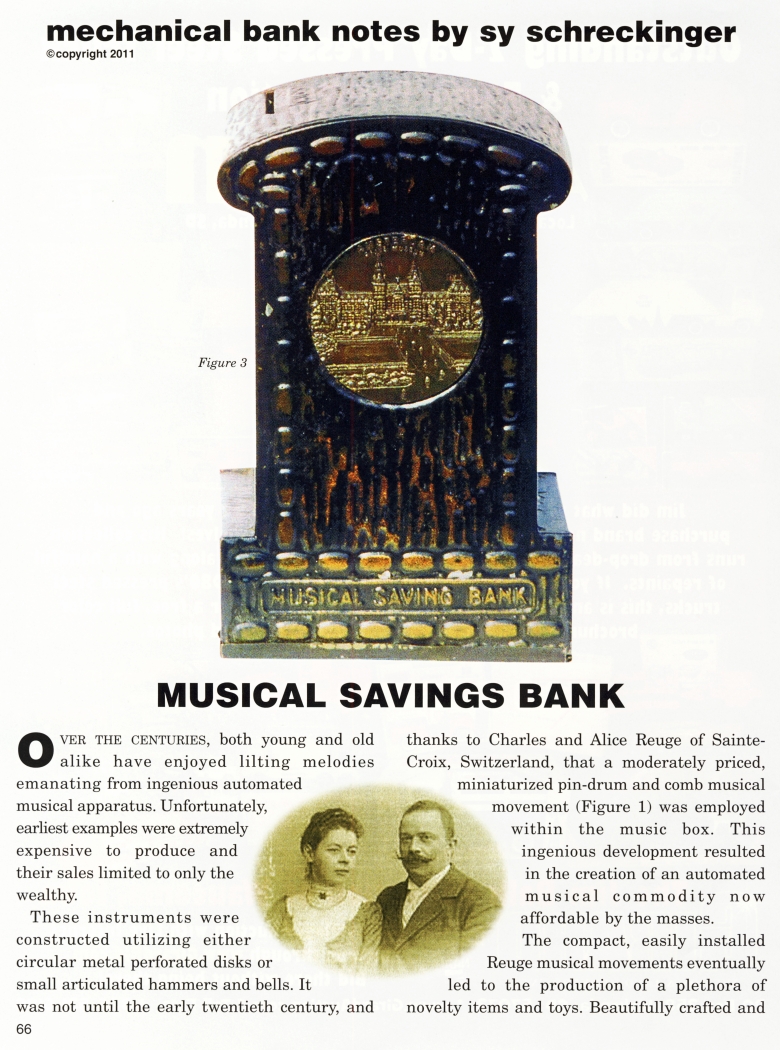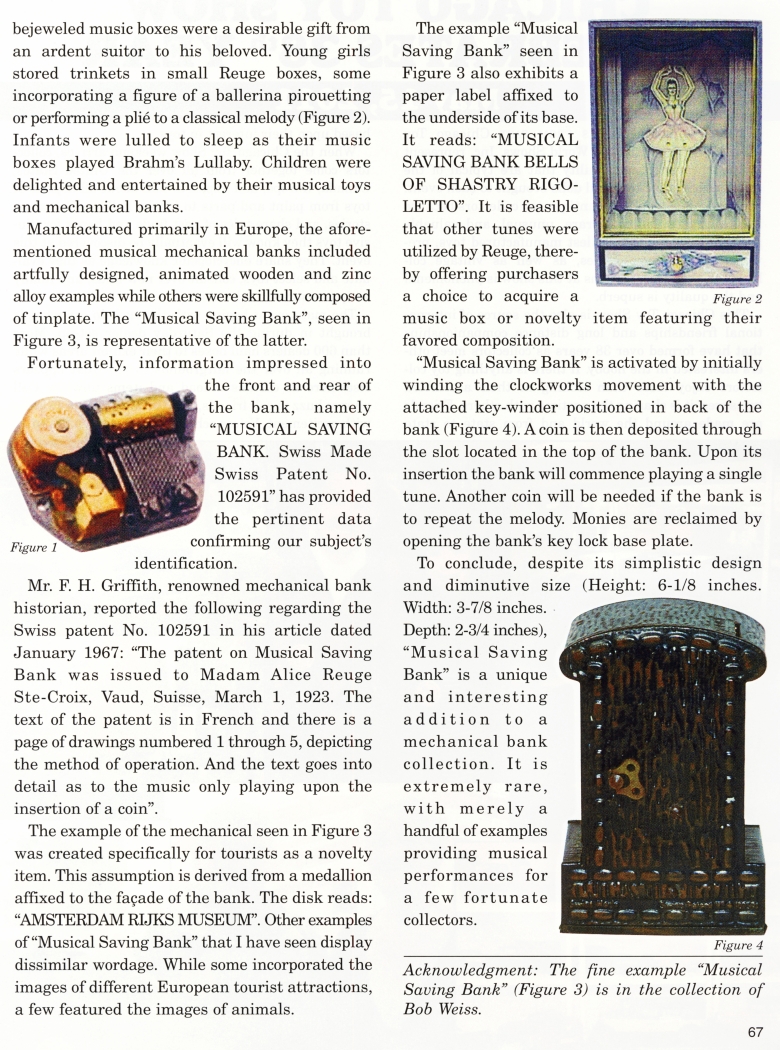|
Musical Savings Bank
by Sy Schreckinger – ANTIQUE TOY WORLD Magazine – April, 2011
OVER THE
CENTURIES, both young and old alike have enjoyed lilting melodies
emanating from ingenious automated
musical apparatus. Unfortunately, earliest examples were extremely
expensive to produce and their sales limited to only the wealthy.
These instruments were constructed utilizing either circular metal
perforated disks or small articulated hammers and bells. It
was not until the early twentieth century, and
thanks to Charles and Alice Reuge of Sainte-Croix, Switzerland, that a moderately priced,
miniaturized pin-drum and comb musical
movement (Figure 1) was employed within the music box. This
ingenious development resulted
in the creation of an automated
musical commodity now affordable by the masses.
The compact, easily installed
Reuge musical movements eventually
led to the production of a plethora of
novelty items and toys. Beautifully crafted and
bejeweled music boxes were a desirable gift from an ardent suitor to his
beloved. Young girls stored trinkets in small Reuge boxes, some
incorporating a figure of a ballerina pirouetting or performing a pli6
to a classical melody (Figure 2). Infants were lulled to sleep as their
music boxes played Brahm's Lullaby. Children were delighted and
entertained by their musical toys and mechanical banks.
Manufactured primarily in Europe, the aforementioned musical mechanical
banks included artfully designed, animated wooden and zinc alloy
examples while others were skillfully composed of tinplate. The "Musical
Saving Bank", seen in Figure 3, is representative of the latter.
Fortunately, information impressed into
the front and rear of
the bank, namely
"MUSICAL SAVING BANK. Swiss Made
Swiss Patent No.
102591" has provided
the pertinent data
confirming our subject's identification.
Mr. F. H. Griffith, renowned mechanical bank historian, reported the
following regarding the Swiss patent No. 102591 in his article dated
January 1967: "The patent on Musical Saving Bank was issued to Madam
Alice Reuge Ste-Croix, Vaud, Suisse, March 1, 1923. The text of the
patent is in French and there is a page of drawings numbered 1 through
5, depicting the method of operation. And the text goes into detail as
to the music only playing upon the insertion of a coin".
The example of the mechanical seen in Figure 3 was created specifically
for tourists as a novelty item. This assumption is derived from a
medallion affixed to the facade of the bank. The disk reads: "AMSTERDAM
RIJKS MUSEUM". Other examples of "Musical Saving Bank" that I have seen
display dissimilar wordage. While some incorporated the images of
different European tourist attractions, a few featured the images of
animals.
The example "Musical Saving Bank" seen in Figure 3 also exhibits a paper
label affixed to the underside of its base. It reads: "MUSICAL SAVING
BANK BELLS OF SHASTRY RIGOLETTO". It is feasible that other tunes were
utilized by Reuge, thereby offering purchasers a choice to acquire a
music box or novelty favored composition.
"Musical Saving Bank" is activated by initially winding the clockworks
movement with the attached key-winder positioned in back of the bank
(Figure 4). A coin is then deposited through the slot located in the top
of the bank. Upon its insertion the bank will commence playing a single
tune. Another coin will be needed if the bank is to repeat the melody.
Monies are reclaimed by opening the bank's key lock base plate.
To conclude, despite its simplistic design and diminutive size (Height:
6-1/8 inches.
Width: 3-7/8 inches. Depth: 2-3/4 inches), "Musical Saving Bank" is a
unique and interesting addition to a mechanical bank collection. It is
extremely rare, with merely a handful of examples providing musical
performances for a few fortunate collectors.
Acknowledgment: The fine example "Musical Saving Bank" (Figure 3) is in
the collection of Bob Weiss.
|


